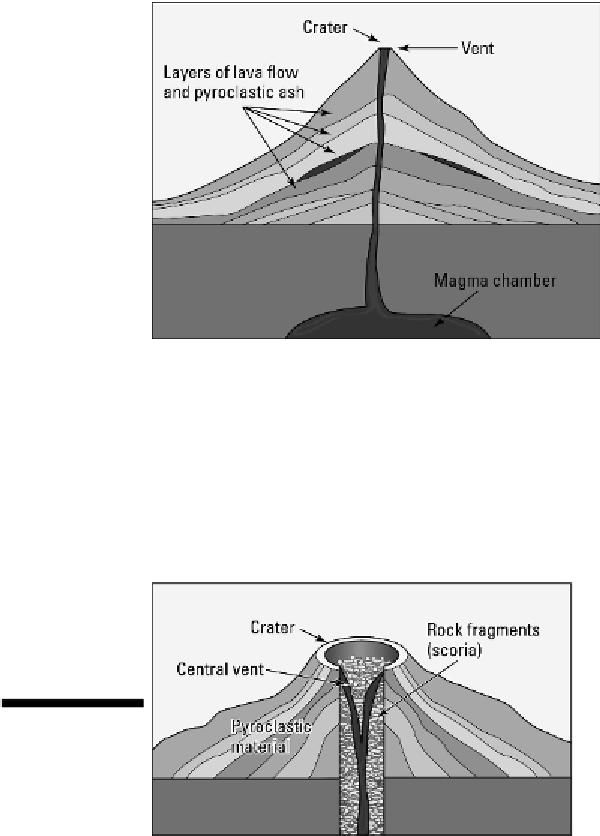Geology Reference
In-Depth Information
around the Pacific Ocean, including the recently eruptive Mount St. Helens in Washing-
ton State. Their magma is created as continental crust subducts and is melted. (See
Chapter 10 for details on how subduction occurs.) As a result, their magmas have a
higher silica content than shield volcanoes.
Stratovolcanoes have high peaks, steep slopes, and small craters as illustrated in Figure
7-3. They span up to 10 kilometers (6 miles) across — much smaller than shield volca-
noes. The peak is created by layers of
andesite
(an igneous rock with high silica content)
and pyroclastic materials.
Figure 7-3:
Features of a stra-
tovolcano or com-
posite cone.
Cinder cones
Cinder cones
are steep sided, relatively small, cone-shaped volcanic features with relat-
ively large craters at their peaks. Figure 7-4 illustrates the common features of a cinder
cone volcano. Eruption of pyroclastic material from a volcano creates a cinder cone as it
piles up around the vent and crater. The pyroclastic material may include chunks of
lava, ash, and vesicular rocks (resulting from gas-filled lava) called
scoria.
Figure 7-4:
Features of a
cinder cone vol-
cano.





